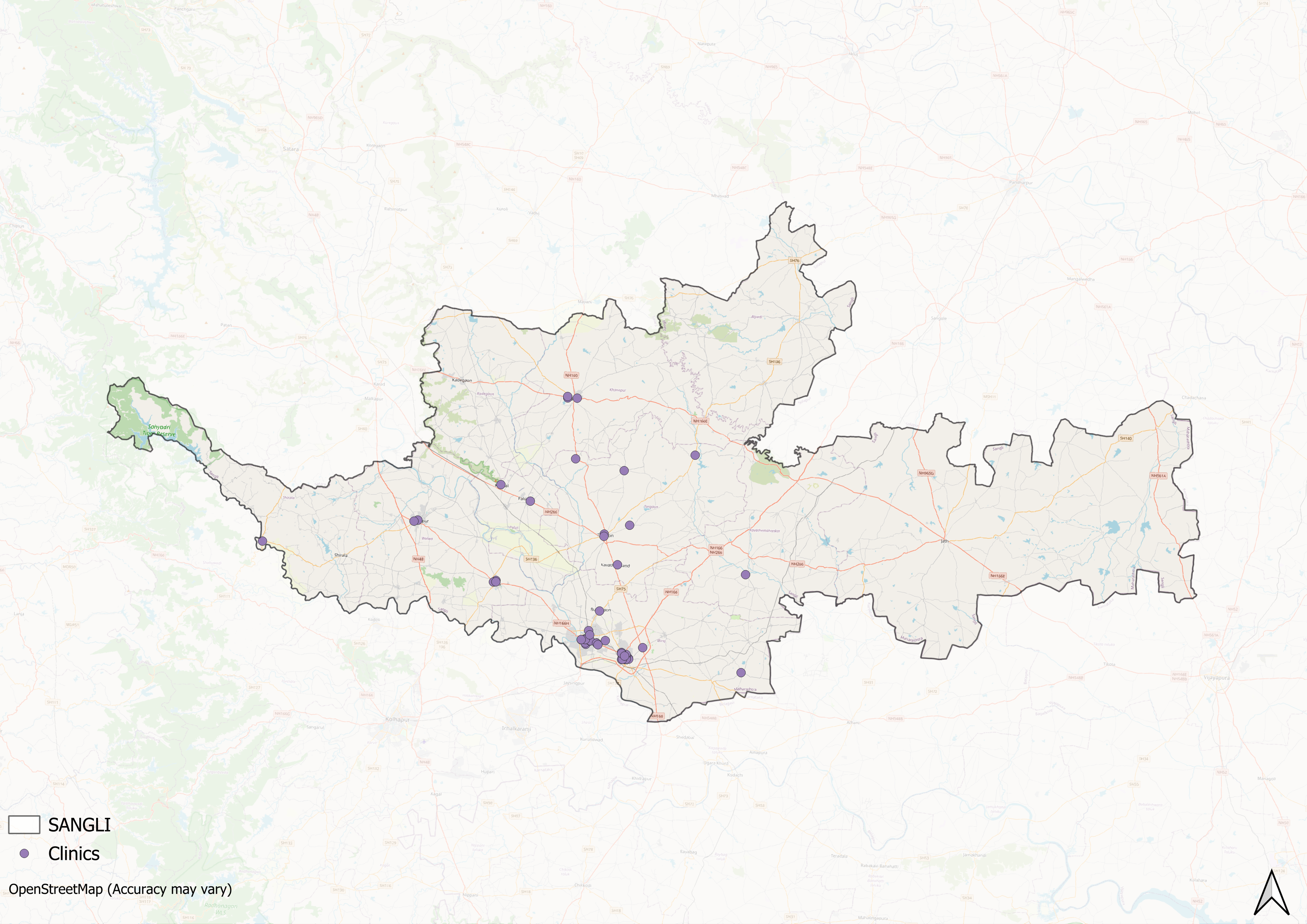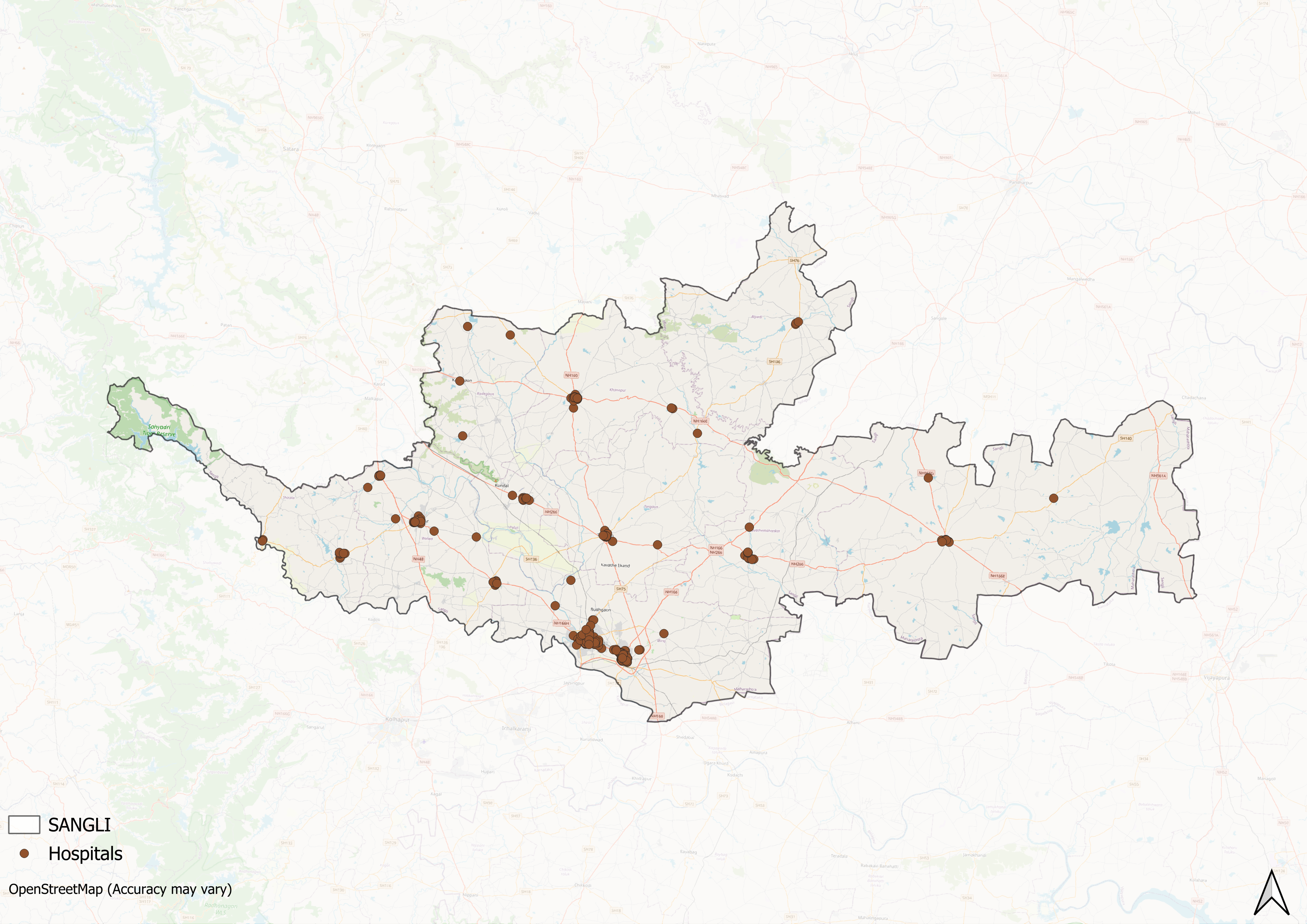Contents
- Healthcare Infrastructure
- Age-Old Practices & Remedies
- Graphs
- Healthcare Facilities and Services
- A. Public and Govt-Aided Medical Facilities
- B. Private Healthcare Facilities
- C. Approved vs Working Anganwadi
- D. Anganwadi Building Types
- E. Anganwadi Workers
- F. Patients in In-Patients Department
- G. Patients in Outpatients Department
- H. Outpatient-to-Inpatient Ratio
- I. Patients Treated in Public Facilities
- J. Operations Conducted
- K. Hysterectomies Performed
- L. Share of Households with Access to Health Amenities
- Morbidity and Mortality
- A. Reported Deaths
- B. Cause of Death
- C. Reported Child and Infant Deaths
- D. Reported Infant Deaths
- E. Select Causes of Infant Death
- F. Number of Children Diseased
- G. Population with High Blood Sugar
- H. Population with Very High Blood Sugar
- I. Population with Mildly Elevated Blood Pressure
- J. Population with Moderately or Severely High Hypertension
- K. Women Examined for Cancer
- L. Alcohol and Tobacco Consumption
- Maternal and Newborn Health
- A. Reported Deliveries
- B. Institutional Births: Public vs Private
- C. Home Births: Skilled vs Non-Skilled Attendants
- D. Live Birth Rate
- E. Still Birth Rate
- F. Maternal Deaths
- G. Registered Births
- H. C-section Deliveries: Public vs Private
- I. Institutional Deliveries through C-Section
- J. Deliveries through C-Section: Public vs Private Facilities
- K. Reported Abortions
- L. Medical Terminations of Pregnancy: Public vs Private
- M. MTPs in Public Institutions before and after 12 Weeks
- N. Average Out of Pocket Expenditure per Delivery in Public Health Facilities
- O. Registrations for Antenatal Care
- P. Antenatal Care Registrations Done in First Trimester
- Q. Iron Folic Acid Consumption Among Pregnant Women
- R. Access to Postnatal Care from Health Personnel Within 2 Days of Delivery
- S. Children Breastfed within One Hour of Birth
- T. Children (6-23 months) Receiving an Adequate Diet
- U. Sex Ratio at Birth
- V. Births Registered with Civil Authority
- W. Institutional Deliveries through C-section
- X. C-section Deliveries: Public vs Private
- Family Planning
- A. Population Using Family Planning Methods
- B. Usage Rate of Select Family Planning Methods
- C. Sterilizations Conducted (Public vs Private Facilities)
- D. Vasectomies
- E. Tubectomies
- F. Contraceptives Distributed
- G. IUD Insertions: Public vs Private
- H. Female Sterilization Rate
- I. Women’s Unmet Need for Family Planning
- J. Fertile Couples in Family Welfare Programs
- K. Family Welfare Centers
- L. Progress of Family Welfare Programs
- Immunization
- A. Vaccinations under the Maternal and Childcare Program
- B. Infants Given the Oral Polio Vaccine
- C. Infants Given the Bacillus Calmette Guerin (BCG) Vaccine
- D. Infants Given Hepatitis Vaccine (Birth Dose)
- E. Infants Given the Pentavalent Vaccines
- F. Infants Given the Measles or Measles Rubella Vaccines
- G. Infants Given the Rotavirus Vaccines
- H. Fully Immunized Children
- I. Adverse Effects of Immunization
- J. Percentage of Children Fully Immunized
- K. Vaccination Rate (Children Aged 12 to 23 months)
- L. Children Primarily Vaccinated in (Public vs Private Health Facilities)
- Nutrition
- A. Children with Nutritional Deficits or Excess
- B. Population Overweight or Obese
- C. Population with Low BMI
- D. Prevalence of Anaemia
- E. Moderately Anaemic Women
- F. Women with Severe Anaemia being Treated at an Institution
- G. Malnourishment Among Infants in Anganwadis
- Sources
SANGLI
Health
Last updated on 26 July 2025. Help us improve the information on this page by clicking on suggest edits or writing to us.
Sangli’s healthcare landscape, like many other regions across India, is shaped by a mix of indigenous and western medical practices. For centuries, communities in the district depended on local healers such as hakims and vaidyas, who treated illnesses using plants, herbs, and other resources found in the surrounding forests and fields. This use of local knowledge and natural remedies formed the base of early healthcare in Sangli before formal hospitals were established. Over time, these practices continued alongside the introduction and expansion of more specialised medical services.
Healthcare Infrastructure
Much like other regions in India, Sangli’s healthcare infrastructure follows a multi-tiered system that involves both public and private sectors. Currently, the public healthcare system is tiered into primary, secondary, and tertiary levels. Primary care is provided through Sub Centres and Primary Health Centres (PHCs), while secondary care is managed by Community Health Centres (CHCs) and Sub-District hospitals. Tertiary care, the highest level, includes Medical Colleges and District Hospitals. This system has been shaped and refined over time, influenced by national healthcare reforms.


Sangli’s formal healthcare network, like much of India, has its roots in the colonial period, which laid the early foundations for the system in place today. During this period, Sangli functioned as a princely state, and the royal family played an active role in developing local institutions alongside British administrative measures. Over the 20th century, the district’s healthcare landscape gradually expanded in response to local needs and advances in medical practice.
The General Hospital in Sangli served for many decades as the primary government facility, with about 115 beds and a tuberculosis clinic that accommodated around 16 patients. In Miraj, the contributions of the royal family are evident from 1864, when Shrimant Patwardhan established the first government hospital and appointed Dr. Gopalrao Govindrao Watwe as its first Indian doctor.
In 1892, William Wanless, a renowned Presbyterian medical missionary, expanded medical services by founding several institutions, including Wanless Hospital, which later became the site for a government medical college in 1961. By the late 1960s, this college had added departments for Pharmacology, Preventive and Social Medicine, and Pathology. In 1981, a hospital was approved on the college campus to support teaching and patient care.
![Wanless/Miraj Hospital[1]](/media/statistic/images/maharashtra/sangli/health/wanlessmiraj-hospital1-2d959360.png)
Alongside the expansion of government facilities, private hospitals were gradually set up in the district to provide general and specialised medical services. Among some of the major facilities that have come up over time is the Sevasadan Lifeline Super Speciality Hospital, which was established in Miraj in 2018 to provide cardiology and other speciality services.
Another notable facility is the Ushahkal Abhinav Institute of Medical Sciences (UAIMS), which offers general and emergency treatment and has plans to add robotic and transplant surgeries.
![Ushahkal Abhinav Institute of Medical Sciences (UAIMS)[2]](/media/statistic/images/maharashtra/sangli/health/ushahkal-abhinav-institute-of-medical-science_CSAbJsy.png)
However, similar to broader patterns that can be seen across India, the district’s healthcare infrastructure has developed unevenly across geographic lines. Additionally, studies by S. B. Gaikwad and Annasaheb Shivaji Kadam (2016) note that many hospitals, particularly rural hospitals, continue to face shortages of resources and staff. Common challenges include limited access to clean drinking water, frequent power supply disruptions, and inadequate storage for medical supplies, all of which affect the delivery of services. The Civil Hospital has also been noted to face shortages of qualified doctors and requires improvements in infrastructure and facilities.
Age-Old Practices & Remedies
Before the development of Western medical systems and the three-tiered healthcare structure seen today, people in Sangli, like in much of India, relied on local knowledge and remedies to manage illness and maintain health. The region’s foothills along the Western Ghats are known for a variety of medicinal plants that villagers have used for generations. In many parts of Sangli, traditional healers known as vaidus still visit settlements to provide treatment using herbs and other local resources.
In areas such as Kadegaon taluka, researchers have noted specific remedies that are still in use. One such treatment involves giving juice from the bark of the Palas (Butea monosperma) plant on an empty stomach to help clear intestinal worms. Sitaphal leaves are also used to treat worms in skin sores.
![Palas plant[3]](/media/statistic/images/maharashtra/sangli/health/palas-plant3-fecf308f.png)
Graphs
Healthcare Facilities and Services
Morbidity and Mortality
Maternal and Newborn Health
Family Planning
Immunization
Nutrition
Sources
Chopade, A. R., & Sonawane, A. 2011. "Traditional Herbal Remedies in Sangli District." Vol. 1, no. 3. Asian Journal of Pharmaceutical Research.https://asianjpr.com/HTMLPaper.aspx?Journal=…
Dr. Ghatge’s Hospital. "About Us." https://drghatges.com/about/
Dr. S. B. Gaikwad and Shri. Annasaheb Shivaji Kadam. 2016. Emerging issues of public health care system in Sangli district. Vol. 5, No. 12. Indian Streams Research Journal.https://oldisrj.lbp.world/UploadedData/10102…
Government Medical College, Miraj. "History of GMC Miraj." GMC Miraj.https://www.gmcmiraj.edu.in/about_us#:~:text=1%20%E2%80%93%20The%20building%20of%20first,Hospital%20including%20the%20Pharmacy%20College.https://www.gmcmiraj.edu.in/about_us#:~:text…
Government of India. 1969. Maharashtra State Gazetteers: Sangli District. Ministry of Information and Broadcasting, Government of India.
Jadhav, R. R. 2015. "Ethnobotanical and Ethnomedicinal Survey of Kadegaon Tahsil, Sangli, Maharashtra, India." ResearchGate.https://www.researchgate.net/publication/362…
John, T. Jacob. 2023. "The Real Purpose of the Medical College." The Hinduhttps://www.thehindu.com/opinion/op-ed/the-real-purpose-of-the-medical-college/article67232008.ecehttps://www.thehindu.com/opinion/op-ed/the-r…
M Choksi, B. Patil et al. 2016. Health systems in India.Vol. 36.Journal of Perinatology. https://pmc.ncbi.nlm.nih.gov/articles/PMC5144115/https://pmc.ncbi.nlm.nih.gov/articles/PMC514…
Sevasadan Lifeline Super Speciality Hospital. "Company Profile." LinkedIn.https://www.linkedin.com/company/sevasadan-l…
Shinde, P. S. 2017. "Healthcare Infrastructure in Sangli District: A Statistical Analysis." Vol. 7, no. 2.Indian Streams Research Journal.https://oldisrj.lbp.world/UploadedData/10102.pdfhttps://oldisrj.lbp.world/UploadedData/10102…
The Times of India. 2023. Rare heart surgery at Sevasadan Lifeline hospital in Sangli using Tavi procedure. https://timesofindia.indiatimes.com/city/kol…
Udyog Aadhar Information & Management System (UAIMS). "About Us." UAIMS.https://uaims.in/about-us/
Last updated on 26 July 2025. Help us improve the information on this page by clicking on suggest edits or writing to us.